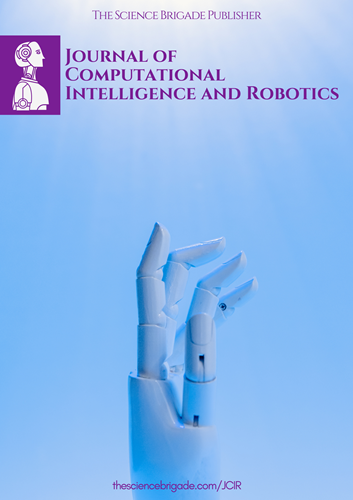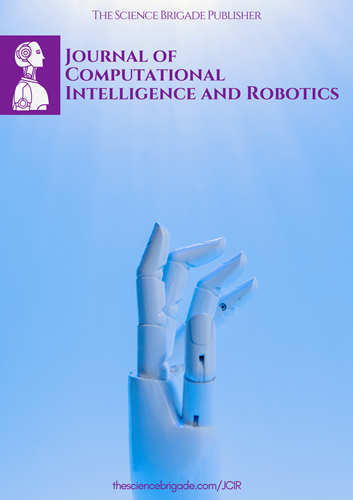Machine Learning-Based Systems for Real-Time Traffic Prediction and Management in Automotive Development: Techniques, Models, and Applications
Keywords:
Traffic prediction, Machine learning, Real-time traffic management, Intelligent transportation systems (ITS), Recurrent neural networks (RNNs), Convolutional neural networks (CNNs), Long short-term memory (LSTM), Reinforcement learning, Vehicle-to-everything (V2X) communicationAbstract
Urban traffic congestion is a growing concern globally, leading to increased travel times, fuel consumption, and emissions. This research paper delves into the application of machine learning (ML) for real-time traffic prediction and management within the realm of automotive development. Our primary focus is on exploring advanced models, techniques, and their real-world implementations that demonstrably improve traffic flow and reduce congestion.
The paper commences by establishing the context of the problem. We delve into the detrimental effects of traffic congestion, encompassing economic and environmental costs, alongside the negative impact on public health and overall quality of life. Subsequently, we introduce the concept of Intelligent Transportation Systems (ITS) as a potential solution framework. Here, we highlight the critical role of real-time traffic prediction in enabling proactive management strategies.
Next, we embark on a comprehensive exploration of ML techniques for traffic prediction. The paper emphasizes the strengths of various ML algorithms, particularly recurrent neural networks (RNNs) and their variants, such as Long Short-Term Memory (LSTM) networks. These models excel at capturing temporal dependencies within traffic data sequences, crucial for accurate short-term and long-term traffic flow forecasting. Additionally, we discuss the potential of Convolutional Neural Networks (CNNs) for analyzing spatial traffic patterns and extracting meaningful features from sensor data.
Furthermore, the paper explores the burgeoning field of reinforcement learning (RL) for real-time traffic management. RL offers a promising avenue for optimizing traffic light control and dynamic route planning based on predicted traffic conditions. We delve into the potential of RL agents learning optimal control strategies through interaction with the simulated or real-world traffic environment.
A critical aspect of this research is the integration of ML-based prediction models with real-world traffic management systems. The paper investigates the role of Vehicle-to-Everything (V2X) communication protocols in facilitating data exchange between vehicles, infrastructure, and centralized traffic management centers. V2X communication enables real-time collection of traffic data, including vehicle location, speed, and direction, further enriching the training datasets for ML models.
To solidify the theoretical framework, the paper presents a series of real-world case studies showcasing the implementation of ML-based traffic prediction and management systems. We delve into specific deployments, analyzing their effectiveness in reducing congestion and improving traffic flow. The case studies encompass diverse scenarios, including urban arterial roads, freeway networks, and multimodal transportation systems.
A critical analysis of the advantages and limitations of the presented techniques is an integral component of the research. While acknowledging the substantial benefits of ML-based traffic management, the paper also addresses challenges such as data quality and availability, computational resource limitations, and the need for robust security protocols within V2X communication networks.
The concluding section of the paper summarizes the key findings and underscores the transformative potential of ML for automotive development, particularly in tackling the growing challenge of traffic congestion. We outline promising research directions and highlight the significance of ongoing collaboration between researchers, engineers, and policymakers to develop and implement practical and scalable solutions for smarter and more efficient traffic management in the future.
Downloads
Downloads
Published
Issue
Section
License

This work is licensed under a Creative Commons Attribution-NonCommercial-ShareAlike 4.0 International License.
License Terms
Ownership and Licensing:
Authors of this research paper submitted to the journal owned and operated by The Science Brigade Group retain the copyright of their work while granting the journal certain rights. Authors maintain ownership of the copyright and have granted the journal a right of first publication. Simultaneously, authors agreed to license their research papers under the Creative Commons Attribution-NonCommercial-ShareAlike 4.0 International (CC BY-NC-SA 4.0) License.
License Permissions:
Under the CC BY-NC-SA 4.0 License, others are permitted to share and adapt the work, as long as proper attribution is given to the authors and acknowledgement is made of the initial publication in the Journal. This license allows for the broad dissemination and utilization of research papers.
Additional Distribution Arrangements:
Authors are free to enter into separate contractual arrangements for the non-exclusive distribution of the journal's published version of the work. This may include posting the work to institutional repositories, publishing it in journals or books, or other forms of dissemination. In such cases, authors are requested to acknowledge the initial publication of the work in this Journal.
Online Posting:
Authors are encouraged to share their work online, including in institutional repositories, disciplinary repositories, or on their personal websites. This permission applies both prior to and during the submission process to the Journal. Online sharing enhances the visibility and accessibility of the research papers.
Responsibility and Liability:
Authors are responsible for ensuring that their research papers do not infringe upon the copyright, privacy, or other rights of any third party. The Science Brigade Publishers disclaim any liability or responsibility for any copyright infringement or violation of third-party rights in the research papers.




